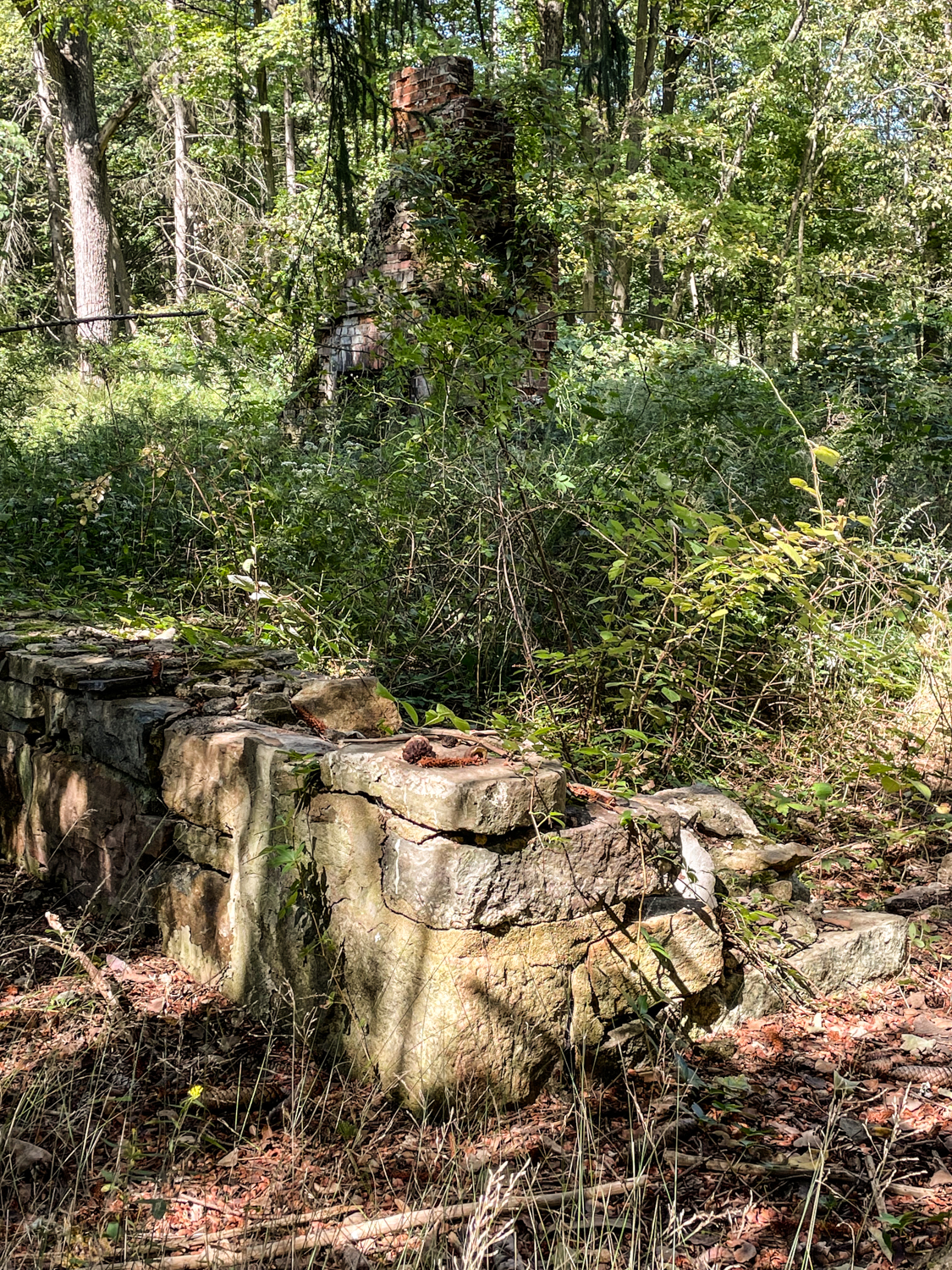The Elmer Farmhouse
The first building visible on entering the property was an old farmhouse that sat just to the north of the driveway and would have been visible as one crested the railroad tracks and headed towards the property's residential core. Long known to staff and vistors as the "Garrigus Farmhouse," this is probably a misnomer as the property descended in the family of James Floyd Elmer, whose family maintained a presence in the vicinity through 1908. His daughter Sarah A. Elmer, for instance, was associated with the property that Stickley's Cow and Horse Barns were later built on, and its likely that this was one of the initial parcels that he acquired as she died in 1908, just at the time when he was beginning this project.

Various photographs of the Elmer Farmhouse showing the extent of vandalism and condition of disrepair shortly before it was taken down. The shorter section of the house (on the left) is the earliest part, while the taller section was added probably in the later 19th century.
David Cathers has noted with some dismay that Stickley's attitude towards the farmers in the area and belief that they had abandoned and neglected their property lacks the generosity of spirit that we typically associate with him, and indeed, for a man who spoke of the diginity of labor and hard work, he is surprisingly unsympathetic to the plight of these people. And yet, when we look at the probate records of James Elmer, and the conditions of his home life, Stickley's description of "shabby" homes and abandoned farms–at least in some cases–does contain a kernel of truth. Valued at just over $2800 at the time of his death in 1863, this is by no means a man who is wealthy, especially considering that the household included him, his wife, and their nine children. But there can be little doubt that conditions like this were familiar to Stickley, and perhaps it was their familiarity that bred contempt: in the 1870 census, Stickley's father's estate was valued at $1000 for a family of nine. Gustav's aversion to poverty and the lives of those struggling seems at odds with a man who himself rose out of relative poverty and had been increasingly upwardly mobile for his adult life. One is left wondering whether he forgot the conditions from which he came, or whether they were simply too close to home to have empathy for.
Elmer's probate inventory provides a window into the type of farming that transpired on the property prior to Stickley's arrival, and gives a sense of the material world that farmers like him inhabitated. Virtually a third of the monetray value of his estate is tied up in 6 horses, a carriage, 9 cows, and the five acres of wheat he was growing. There is a frugality born of necessity amongst the poor, and this is evident in Elmer's probabte by the descriptions of items and their relatively small values: Six Flag bottom chairs (the period term for rush seats) valued at $2.25; a broken white tea set worth 75 cents; an old bureau priced at $1.00; one old table at 25 cents. And yet the family must have been fairly industrious too, and Elmer seems to have placed a value on education as the inventory also included a sewing machine valued at $20.00, maps of the United States, New Jersey, and Morris County, and $14.00 worth of books.

Remains of the foundation and chimney stack from the Elmer farmhouse, 2021.
It is difficult to imagine, standing by the foundation of the Elmer Farmhouse today–the house itself was deemed structurally unsafe and removed some time ago–how the eleven members of the household would have navigated the space in 1860, how practical things like the preparation of meals happened in such tight quarters. Where–and around what–could a family meal have taken place? Like Stickley, we have a tendency to romance the idea of rural life, picturing it either as something it never was, or attaching to it conditions that only existed for the wealthiest of the gentleman farmers who managed their estates, but never truly toiled. The probate inventory of James Floyd Elmer (1812-1863), a man who worked the property and undoubtedly shaped the landscapae that Stickley would purchase, is a sober reminder that we are always dependent upon the labor of others, and frequently benefit from their actions in ways we cannot realize. We might consider this when we–like Stickley–are quick to judge the conditions of another without understanding the journey they have been on.